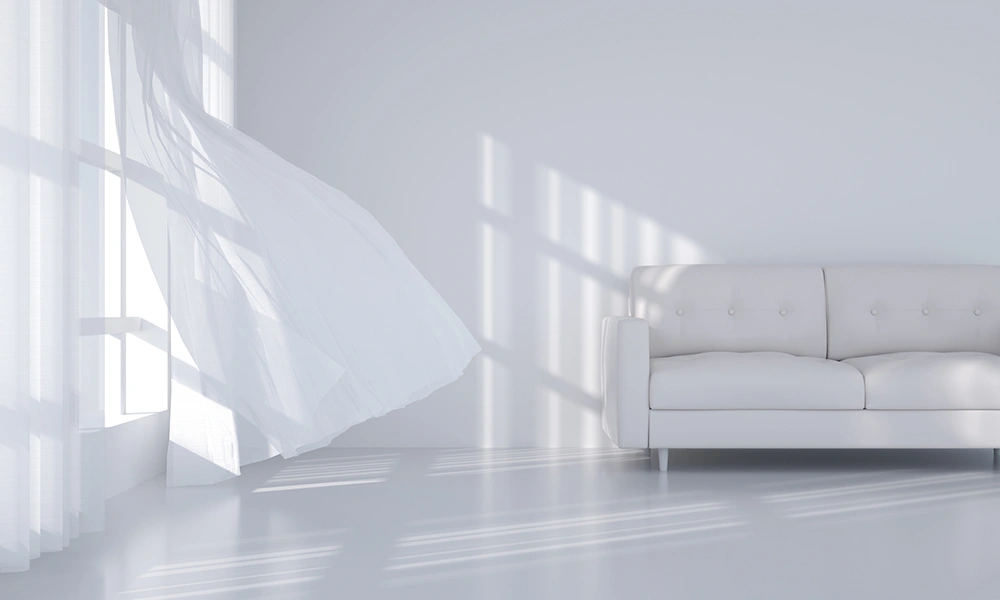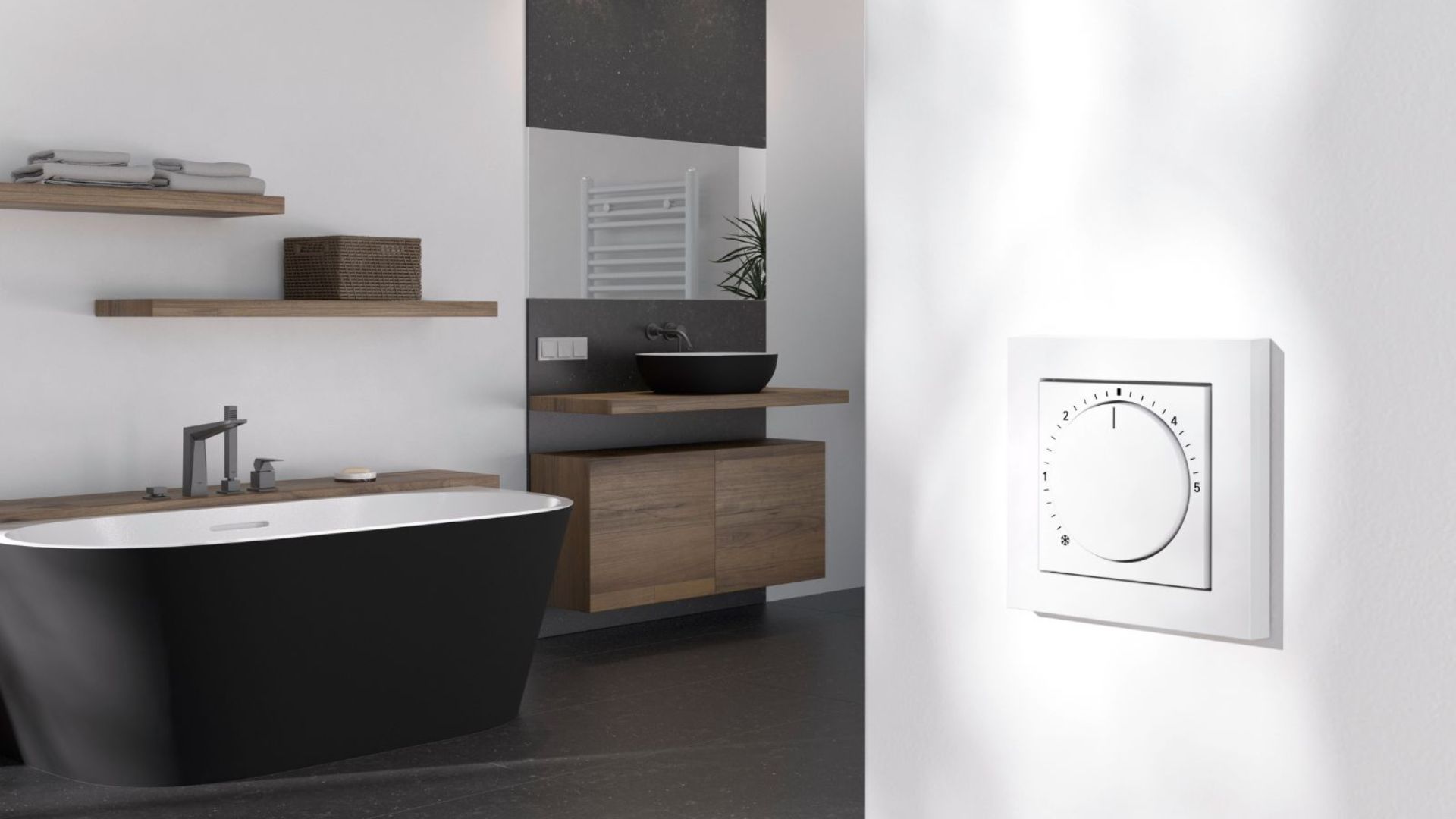
Mould infestation in living spaces poses a threat to both the building structure and the health of its occupants. Our guide explains when to seek professional help.
Tackling mould requires a two-pronged approach: addressing visible mould and preventing hidden growth. However, it's crucial to exercise caution. While mould removal is essential, overreacting can be detrimental. Some mould remediation products can pose an even greater health hazard than the mould itself.
Causes of mould infestation
Moisture is the primary culprit behind mould growth in homes. When warm, moist air meets colder wall surfaces, condensation forms. This leads to indirect dampening of rooms –especially during cold weather. Direct dampness, on the other hand, can arise from leaking roofs, basements, water pipes, or from water damage caused by accidents. If these issues persist, mould infestation is likely to follow.
Structural factors, such as thermal bridges around windows and insufficiently insulated exterior walls, also promote moisture condensation and thus mould formation. Additionally, airtight building envelopes without adequate ventilation systems can exacerbate moisture buildup. Improper ventilation and heating habits by building occupants further elevate the risk of mould.
Effective ventilation strategies, a healthy indoor climate, and appropriate heating are crucial for regulating indoor humidity and preventing mould growth. These four tips can help:
Assessing the severity of mould infestation
If you discover mould in your home, it's important to stay calm. Not every case of mould infestation necessitates immediate expert intervention. Mould occurrences are categorized according to size and associated health risks. Category zero is considered harmless.

In such instances, you can manage the removal yourself. With category one, it's wise to closely monitor any changes at the affected site. Urgent action is required if the mould infestation can be classified as category two or three. More details can be found in our table at the end of this section.
Both the residents’ health condition and the use of the rooms also play a significant role in categorizing mould infestations. Certain groups, such as pregnant women, elderly or ill people, and those with weakened immune systems, are deemed particularly vulnerable. Mould infestation is rated higher if it affects these risk groups or if concealed mould is detected. Therefore, if you categorize an infestation as category two or three, or if you belong to a risk group, you should immediately consult a professional to discuss possible measures.
Advantages of mould remediation
Professional mould remediation helps to reduce health risks. For instance, it improves air quality by eliminating mould spores, leading to cleaner breathing air. This is especially important for individuals with allergies or respiratory diseases. Moreover, the remediation process visibly enhances the premises and creates a healthy living environment.
When you tackle mould, you are also taking responsibility for your property. After all, effective mould remediation measures contribute significantly to the preservation and possibly even an increase in the value of your property.

How does professional mould remediation work?
Mould remediation is a systematic process that consists of several steps. Initially, professionals inspect the affected areas to determine the extent of the infestation and its causes. Following this, appropriate measures, techniques, and tools to be used are planned. The actual remediation begins with securing and preparing the work area to prevent the spread of mould spores. This may include covering furniture and sealing off ventilation ducts.
The experts use cleaning agents and methods suitable for the type of mould and the surface involved. Once the infestation has been removed, they thoroughly clean the areas to eliminate any residues. This is followed by the implementation of measures to prevent a recurrence of mould growth. Such measures include rectifying the original moisture problems through repairs or structural modifications, as well as improving room ventilation and humidity control. Regular inspections and maintenance ensure the continued success of mould prevention.
The mould remediation process requires expertise and care to protect both the health of the residents and preserve the structure of the building. The following mould remediation measures are distinguished:

How much does mould remediation cost?
The cost of mould remediation can vary significantly depending on the extent of the infestation, the underlying causes, and the necessary measures. On average, you can expect to pay around £100 to £135 per square metre for mould remediation. Therefore, simple cases can be resolved for a few hundred pounds, while extensive renovations involving structural changes may cost several thousand pounds.
DIY mould remediation
Light and minimal mould growth without visible water damage can successfully be treated on your own. Use respiratory protection, safety goggles, and gloves. Choose a suitable cleaning agent for the surface. For superficial contamination, home remedies like alcohol or hydrogen peroxide are often effective. Depending on the surface, there are specific tips for mould removal. On smooth surfaces such as glass or ceramics, a household cleaner often suffices. For mould on walls or wood, alcohol or hydrogen peroxide can be more effective.
Apply the agent, let it act for a short time and wipe the mould away. If it has penetrated deeper, you may need to remove the affected materials. Carefully package and dispose of these materials to prevent the spread of spores. After cleaning, anti-mould agents can help kill the mould. However, be aware that these agents do not solve an underlying moisture problem.

After successfully eliminating the mould, you should take measures to prevent new infestations. This includes regular ventilation, monitoring humidity levels, insulating walls, and using mould-resistant paints.



